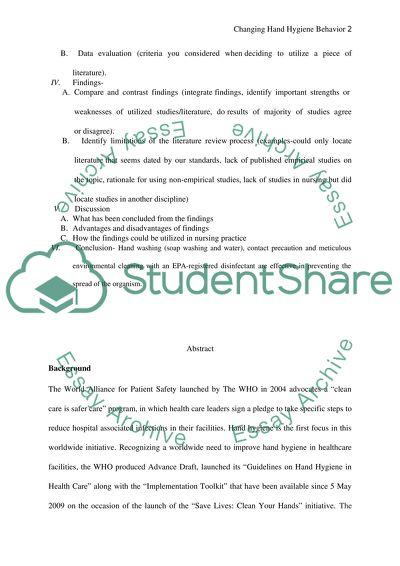Cite this document
(“Changing Hand Hygiene Behavior at the Point of Care to prevent the Dissertation”, n.d.)
Retrieved from https://studentshare.org/family-consumer-science/1411244-changing-hand-hygiene-behavior-at-the-point-of
Retrieved from https://studentshare.org/family-consumer-science/1411244-changing-hand-hygiene-behavior-at-the-point-of
(Changing Hand Hygiene Behavior at the Point of Care to Prevent the Dissertation)
https://studentshare.org/family-consumer-science/1411244-changing-hand-hygiene-behavior-at-the-point-of.
https://studentshare.org/family-consumer-science/1411244-changing-hand-hygiene-behavior-at-the-point-of.
“Changing Hand Hygiene Behavior at the Point of Care to Prevent the Dissertation”, n.d. https://studentshare.org/family-consumer-science/1411244-changing-hand-hygiene-behavior-at-the-point-of.


